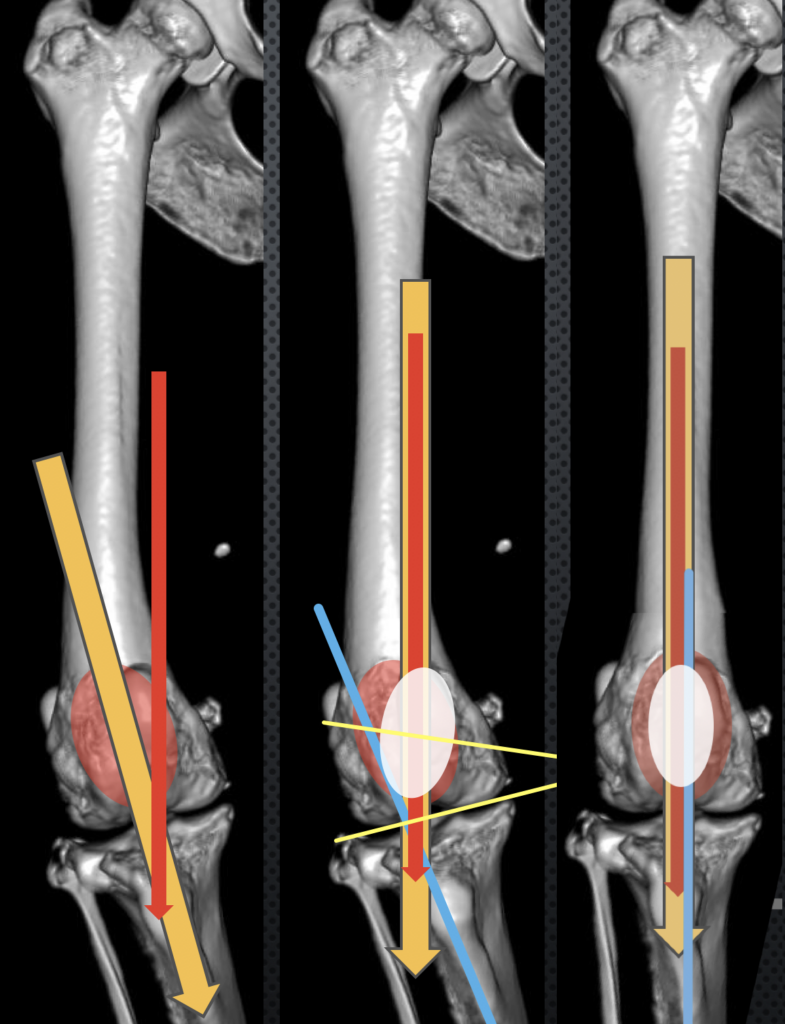
Hnízdo J., Pomahač O., Miimanbayeva M. Trochleární hemiartroplastika kolenního kloubu: retrospektivní klinická studie.
Trochlear hemiarthroplasty of the knee joint: a retrospective clinical study.Veterinářství 2021;71(6):313-321.
SOUHRN
Retrospektivní studie popisuje aplikaci trochleární hemiartroplastiky (Patella Groove Replacement PGR) u malých zvířat. Do studie bylo zahrnuto 44 pacientů (56 implantací), 43 psů, 1 kočka, hmotnosti 1,5-57 kg, za období necelých dvou let. 77 % pacientů bylo samičího pohlaví. Současně na tomto souboru pacientů prvně prezentujeme novou modifikaci techniky implantace, která vede k signifikantnímu snížení komplikací. 32 implantací (57 %) bylo provedeno u pacientů s různými stupni luxace pately, v těchto případech byla implantace protézy doplněna o různé korektivní osteotomie, kvůli nutnosti primárního řešení onemocnění a doprovodných angulárních deformit. Pouze u 14 % operovaných kloubů byla PGR implantace zvolena jakožto samotná terapie instability pately či femoropatelární osteoartrózy. 42 % implantací bylo provedeno u psů s pokročilým degenerativním onemocněním femoropatelárního kloubu, bez současné instability pately. Při současném poranění předního zkříženého vazu byla u 20 kloubů (35 %) provedena stabilizace metodou TPLO. Doba sledování pacientů byla 3-21 měsíců, komplikace nastaly u tří pacientů. U jednoho pacienta došlo k luxaci implantátu s ulomením fixačního kolíku trochleární komponenty, jeden pacient prodělal septickou artritis, kterou bylo možno vyřešit konzervativně. U jednoho pacienta došlo k reluxaci pately. Celkové procento relevantních komplikací bylo 5 %. V popsaném souboru pacientů byla dosažená pooperační funkce kloubů dobrá až nerozlišitelná od normálu. PGR se jeví ve vybraných případech jako smysluplná a relativně bezpečná možnost trochleární náhrady u psů a koček.*
SUMMARY
A retrospective study describes the application of a trochlear unicompartmental prosthesis (Patella Groove Replacement PGR) in small animals. The study included 44 patients (56 implantations), 43 dogs, one cat, weighing from 1.5-57 kg, operated during a period of less than two years. 77% of patients were female. The authors present a new modification of the implantation technique, which leads to a significant reduction of some previously noticed complications. 32 implantations (57%) were performed in patients with different degrees of patellar luxation. In these cases the implantation of the prosthesis was supplemented by various corrective osteotomies, due to the need for treatment of the primary disease and accompanying angular deformities. In only 14% of operated joints, PGR implantation alone was chosen as the sole therapy for patella instability or femoro-patellar osteoarthritis. 42% of implants were performed in dogs with advanced degenerative disease of the femoro-patellar joint compartment, without current patellar instability. With simultaneous anterior cruciate ligament injury, stabilization was performed on 20 joints (35%) using the TPLO method. A modification of the described implantation technique consists in placing the base plate of the PGR implant below the level of the cartilage of the distal trochlea. This prevents impingement between the patella and the distal pole of the implant in maximum flexion. The follow-up period was 3-21 months. Significant complications occurred in three patients. In one patient, the implant dislocated due to fractured peg of the trochlear component. The implant was replaced with a larger size PGR implant. Another patient suffered from septic arthritis, which could be treated conservatively without the need for prosthesis explantation. In one patient, patellar re-luxation occurred due to the undersized size of the implant. The overall percentage of relevant complications was 5%. In the described group of patients, the achieved postoperative joint function was good to indistinguishable from normal. Thanks to the modification of the implant technique, the joints also retained the physiological range of motion. This paper presents the second, and at the same time the largest ever published study on PGR prosthesis with short and mid-term outcomes. PGR appears in selected cases as a functional and relatively safe option for tochlear replacement in dogs and cats.